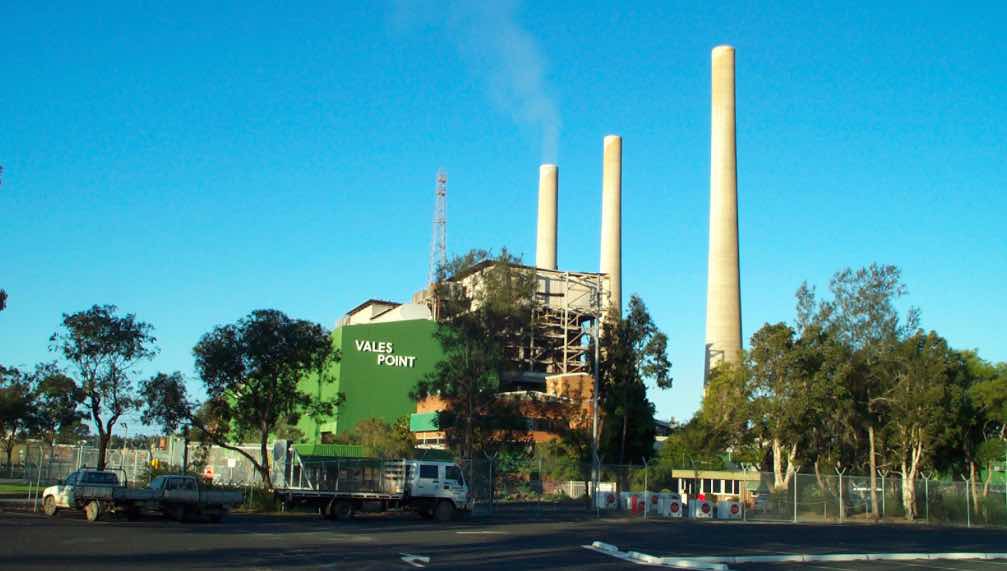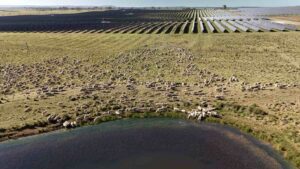The major parties competing for power in Australia’s most populous state are under increasing pressure to present ambitious plans for renewable energy installations in NSW, not least to reduce emissions but also to prepare for the inevitable exit of the state’s ageing coal fleet.
The NSW state election is just six weeks away, but neither the sitting Coalition government or the aspiring Labor party have outlined their near- or long-term energy policies.
NSW is the only mainland state in the National Electricity Market without a renewable target, although the Australian Energy Market Operator has highlighted that because of its ageing coal fleet, it likely faces the biggest transition of any state because of the need to build new capacity to replace that which is due for retirement.
 Last week, a group of Australian climate action groups called on the major parties in the upcoming New South Wales election to prioritise an increase in clean energy and to add 4GW worth of renewable energy capacity in the next term of government. That equates to 1GW a year, above and beyond the federal renewable energy target, which ends its ambition in 2020.
Last week, a group of Australian climate action groups called on the major parties in the upcoming New South Wales election to prioritise an increase in clean energy and to add 4GW worth of renewable energy capacity in the next term of government. That equates to 1GW a year, above and beyond the federal renewable energy target, which ends its ambition in 2020.
Greenpeace Australia Pacific, the Nature Conservation Council of NSW, and Solar Citizens also called for more households to install rooftop solar, with a focus on low-income housing, as part of a plan to help the state grow from being a “laggard to leader on clean energy.”
They say the 4GW worth of large-scale clean power and storage infrastructure over the next term of government (by 2023) should be underpinned by reverse auctions held twice a year in an effort to encourage technology-neutral renewable energy projects.
In addition to simply adding a significant amount of clean energy to the grid, this is expected to also deliver approximately 1875 construction jobs each year and at least 280 ongoing jobs.
The urgency to act is underlined by data accumulated by The Australia Institute, which showed that coal and gas plants in NSW broke down 27 times in 2018, with the worst performers being the Liddell generator the federal Coalition government wants to keep open, and the Vales Point plant that its owners also want to extend.
 Even the state’s most modern large gas plant, the Tallawarra facility, broke down three times.(Readers will also remember its failure – along with missing capacity from Liddell and the failure of the Colongra gas plants – nearly prompted widespread blackouts in February 2017).
Even the state’s most modern large gas plant, the Tallawarra facility, broke down three times.(Readers will also remember its failure – along with missing capacity from Liddell and the failure of the Colongra gas plants – nearly prompted widespread blackouts in February 2017).
“NSW’s aging coal generators are a threat to the reliability of the state’s energy system – this should be a key concern for policy makers,” says Rod Campbell, research director at The Australia Institute.
“Every time gas or coal generators break down, hundreds of megawatts of capacity are instantaneously removed from the grid without warning. This puts undue pressure on the electricity system, risking blackouts and pushing up power prices.
“With heatwaves increasing dramatically as a result of global warming, reliance on these outdated technologies will be an ever increasing liability for NSW.
“NSW lags behind the country, and much of the world, in the transition to clean energy. The state has some serious catching up to do and addressing the unreliability of gas and coal-fired power will be one of the first challenges.”
So far, the NSW Coalition government says it has been focused on looking at the transmission constraints, and while it has a zero-net emissions target for 2050, it has no interim pathway. NSW Labor has flagged emissions controls on the state’s power plants, but has yet to announce its detailed policy.
The policy brief from the four climate groups also calls on the NSW government to ensure that all government operations are powered by 100 per cent clean energy within the next term of government – including everything from schools and hospitals to trains and government buildings.
“Premier Gladys Berejiklian has an opportunity to decisively turn the page on the Abbott era, and to put the Liberal Party – and NSW – on a responsible pathway to a future powered by clean, affordable and reliable electricity,” Greenpeace Australia Pacific NSW Campaign Manager Holly Dawson said in a statement.
“The Berejiklian government has been trying to reassure voters that it is different to its chaotic counterpart in Canberra. Well, now it has the chance to make that real by legislating the clean-energy policies the people of NSW want and need.”
The six-point policy brief also calls for ensuring affordable clean energy for everyone across New South Wales through providing solar, battery, and efficiency rebates, low-interest loans and, and incentives, giving “families, young people, and renters the tools to tackle their cost of living pressures at home.”
It says NSW has a higher proportion of locked-out energy users than other states, with 30 per cent of households renting and 21 per cent of households living in apartments – resulting in approximately 990,000 households who currently are unable to put solar on their roof.
The plan calls for those locked-out from solar (including rental properties) to be able to access solar in the next decade by introducing a Solar For All Rebate.
This would ensure that 400,000 locked-out energy households are supported to access solar at a cost of $1.11 billion; an extension of the existing Solar For Low Income Households Program to provide full rebates for very low-income households; and a half-rebate for other locked-out energy users similar in structure to the Victorian Solar Homes program, including public and social housing providers.
- It also proposes support for households to access solar on their own roof in a micro grid or through a solar garden (offsite solar).
“Just last week, as the southeast sweltered through heatwaves and coal and gas power stations broke down, it was solar energy that prevented more widespread blackouts,” said Nature Conservation Council CEO Kate Smolski. “But to date none of the major parties has announced a credible plan to bolster clean energy and act on climate change.
“NSW has one of worst records in Australia for clean energy, with less than 7% of the state’s power coming from wind and solar. NSW needs to ramp that up to 40% over the next four years to get on track to net-zero emissions by 2040 and prepare for the planned closure of both the Liddell and Vales Point coal power stations.”
Joshua S. Hill also contributed to this report. You can also hear an interview with Nicky Ison, a policy advisor to the four climate action groups, in our Energy Insiders podcast here.










